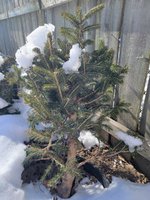Wires_Guy_wires
Imperial Masterpiece
I would not do en entire rootball wash on spruces, they can be finnicky about it, especially when they're older. Maybe a half bare root repot is more suited to the plants wants and needs.Super informative thanks! I'm reporting my first conifer (a Black hills spruce I believe, one of the ones they sell add Christmas trees at nurseries) and I want to get rid of all the soil, trim the roots, and repot in a colonder. The local hydroponics store offers stump tea that I want to reinnocculate with. Glad to get advice from somebody with formal training in the stuff!
I have some disagreements with dr. O'Hanlon about mycorrhizae, because I believe that the claim of "endomyc isn't able to connect to plants past their seedling stage" is not entirely true. We simply don't know. There are millions of strains out there of the same fungus, just because we couldn't connect 200 of them, it doesn't mean it's not happening. I haven't found a study that actually compared the endo myc genotypes found in young plants and the ones found, for instance, fifteen years later. I wouldn't even know how to test that either. I did found studies that showed seedlings inoculated with store bought myc had a lower chance (! Not an impossibility) of associating with wild soil fungi 75 +/-28 days later.
@Deep Sea Diver do you know if there have been studies like that?

